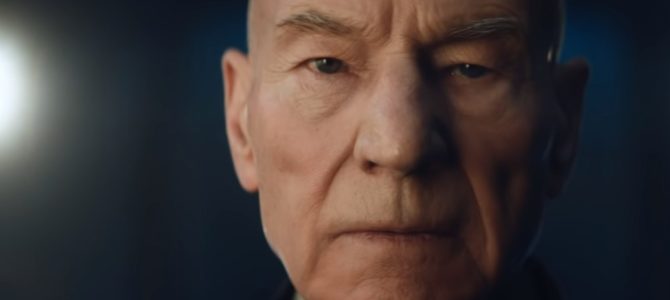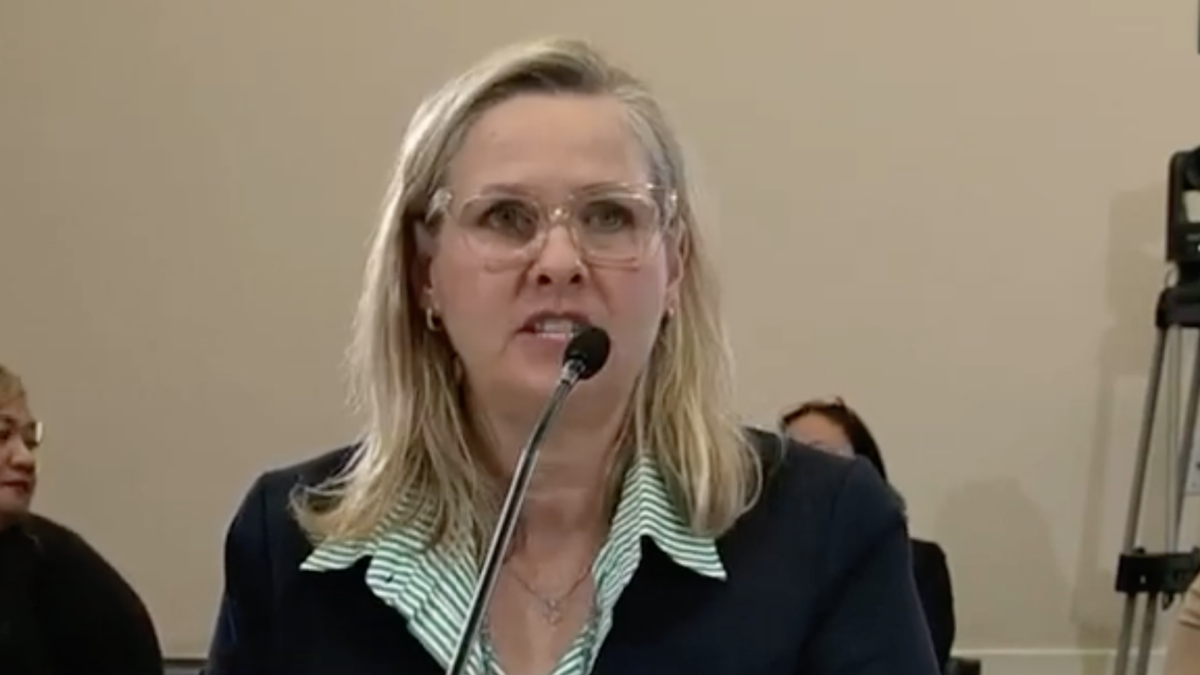
When “Star Trek: Picard” hits CBS All Access this year, it will mark the first time since 1995 the franchise has two shows on the air, with “Deep Space Nine” and “Voyager.” To better understand how important it is to reading the climate for science-fiction shows today, it’s worth looking at what happened the last time “Star Trek” was so popular that Paramount used it to launch an entire network—and how that ended up turning into one of the biggest disasters in TV history.
Much like how CBS All Access handled the roll-out of “Star Trek: Discovery” as its prime feature, “Star Trek Voyager” was to be the flagship program of the newly launched UPN network in January of 1995, with the pilot episode airing on its very first night of programming. Originally a ratings disaster when it premiered in 1966, the “Star Trek” franchise had slowly been creeping its way into the nation’s consciousness through reruns, box office successes, and “Star Trek: The Next Generation.”
“A lot of people loved watching it in reruns as kids and bonding with other fans, and then they loved the fact that ‘TNG’ was the same basic set-up but seemed…well, less cheesy-campy, in a way,” television critic Phillip Dyess-Nyugent said in an electronic communication. “I think it made people like my roommates feel as both they and the show had grown up. It was also just amazing that the show had been killed by the network, and then refused to die, and been resurrected.”
How ‘Voyager’ Went Down in Flames
Like today, there’s nothing studios cling to more than a proven pre-existing property, so spinning off “Star Trek” seemed like a logical bet. In each of the two “Next Generation” spin-offs, there was a twist.
“Voyager” had the premise of a traditional Starfleet crew stripped of its traditional Federation surroundings and stranded on the other end of the galaxy with a Marquis ship in tow. At least, that was what it was supposed to be.
Within a couple of episodes, however, the barriers between the Marquis crew and the Starfleet were erased and the show was highly erratic in nearly everything from characterization to narrative consistency to an overeagerness to push the reset button at episode’s end. I can testify to this personally because I tuned into this show for the first time in the third season and it took me several episodes to figure out the key premise.
While opinions are always subjective and you will probably find a few fans of the show if you look long enough, “Voyager” stands today as one of television’s most legendary disasters. At this point, it’s become somewhat of a parlor game to analyze why the show didn’t work and what might have fixed it, evidenced by so many Reddit threads on the topic.
What helps us understand the failure of “Voyager” is that a number of producers and actors broke away from the don’t-bite-the-hand-that-feeds-you rule of Hollywood public relations and spilled the beans. Ronald D. Moore, who came to “Voyager” after being heavily involved with “Deep Space Nine,” gave a lengthy interview that read like a damning manifesto. Similarly, cast member Garrett Wang said he was given instructions to “to underplay our human characters.”
“He wanted our line delivery to be as military — and subsequently devoid of emotion — as possible, since this, in his opinion, was the only way to make the aliens look real,” said Wang, while cast member Robert Beltran has spewed an endless litany of similar complaints over the years.
So what happened? For one thing there wasn’t a strong voice at the helm. Rick Berman was involved with the “TNG” movies, Jeri Taylor was involved in the concluding seasons of “TNG,” and Michael Piller managed “DS9.” The people that made the “Star Trek” brand successful were largely absent or unfocused on this series. In that vacuum, network executives stepped in and ran “Voyager” like any show at the time, which was aimed at episodic television. This was before “24” or “Lost” and the ensuing Golden Age of TV, which showed that serialization can hook viewers in like never before.
In the end, “Voyager” was a victim of its time and scheduling position. The pressure of the show to succeed for UPN should have pushed the writers to greater heights, but instead they reportedly faced network interference any time they attempted to do anything with the TV show that would entail any serialized plotting. A “Year of Hell“ scenario, in which the ship would be slowly disintegrated in a never-ending time loop, was supposed to run a whole season but was condensed by network vetoes to two episodes.
To determine whether “Star Trek Voyager” was a ratings disaster is a complicated question. It was the top-rated show of UPN—but that’s not saying a lot for a network that was floundering and would eventually be sold in 2006. As critic Greg Fuller noted in 1999, it was a chicken-and-egg situation, whereby the show was failing the network but the network was also failing the show, depending on how you looked at it. In the end, the show still managed to survive seven seasons but greatly dampened enthusiasm for future projects.
And Then There’s ‘Deep Space Nine’
On the other end of the spectrum is “Star Trek: Deep Space Nine.” Debuting in 1993, the show was set in a geopolitical choke point at the far edge of the galaxy where manpower was short and the technology was difficult and foreign. The show centered around a widowed Star Trek captain and father (a relative rarity for the franchise) who was assigned to ease the transition of a planet out of a truly horrifying 60-year military occupation.
Rather than center around an alien of the week, “Deep Space Nine” was about the relationship between this idealized future of humanity and one single imperfect planet. While the show had its share of adventures and scientific anomalies, a formidable intergalactic enemy was introduced at the end of the second season that would lead to an ongoing serialization involving a massive war, a genetically engineered virus, the intersection of religion and power, and more. The show touched on everything from greed to racism to faith to the limits of achieving human perfection (one of the characters was revealed to be genetically engineered).
The show ran more quietly for seven seasons in syndication, but those who watched at the time knew it was something really unusual, not just for “Star Trek,” but TV in general. The passionate fan base recently crowdfunded a documentary. In it, showrunner Ira Stephen Behr recalled how many Hollywood executives were baffled at what they were trying to do and how far they wanted to push the envelope.
“The documentary’s existence proves that ‘Deep Space Nine’ and its fans have had the last laugh. The show not only stands the test of time, but has proven to be prophetic again and again. Its serialized storytelling motif, scorned in its era, is perfect for the Netflix generation, and it blazed a trail through television, transforming the landscape,” wrote critic Kaila Hale-Stern.
From DS9 to the Entire TV Landscape
The serialized storytelling Hale-Stern speaks of became prevalent everywhere in the TV landscape. Most recently, “The Americans,” “Ozark,” “Orange is the New Black,” “Homeland,” and “Breaking Bad” have followed this formula.
One thing these shows have in common is that they are also very dark—which brings an irony all these years later that “Star Trek: Discovery” updates the “Star Trek” universe to today’s serialized TV style, but also went darker than the series was ever meant to go. The show, set a decade before the original “Star Trek,” boasts Bryan Fuller as a show runner. Fuller got his start on “Deep Space Nine” before being part of the serialized TV reinvention as a writer on “Heroes” and showrunner for “Hannibal” and “American Gods.”
While the show hasn’t been a failure, in terms of taking over the “Trek” mantle, it’s been supplanted by an unlikely candidate: “The Orville.” From cartoonist and voice actor Seth MacFarlane, the show premiered in the same 2017 season as “Discovery” with several of the key creative figures (Jonothan Frakes as director, Brannon Braga as producer, Penny Johnson-Gerald as a cast member, Andre Bormanis as technical advisor) brought over from the “Star Trek” universe.
At first, it felt like an awkward attempt to replicate “Star Trek” while dodging copyright issues. But by the second season, publications like The Verge, which originally called the show “terminally bland,” reversed course and declared that it had “matured into serious science-fiction.” The Wall Street Journal did a profile titled “Orville and its Vintage Vibe Fill the Void for Some Star Trek Fans,” while Forbes released another article titled “The Star Trek show fans have been waiting for.”
One explanation for this turnaround is that MacFarlane’s reputation was primarily comedic and fans may have expected the overt humor in his cartoons and films rather than the occasional humor this show supplies through character interactions. That tonal awkwardness took a while to work out. More importantly, MacFarlane took what he liked about “Star Trek” and the other science fiction that inspired him and kept the best parts of it: Mainly, the positive vision of humanity’s future.
Like the differing fates of “Deep Space Nine” and “Voyager,” “Orville” has succeeded in ways that “Discovery” hasn’t yet experienced by reading the television landscape better and knowing what was missing from it. In 1995, science-fiction shows were en vogue, but science-fiction shows that could tell a continuing story was something “Deep Space Nine” capitalized on.
In 2017, serialized storytelling was synonymous with the Golden Age of television, but it’s not the only key to what audiences want. “The Orville” has stuck to the same traces and has gradually built up some of its ongoing plots, as has “Star Trek Discovery.” The difference is that “Orville” has done it with a more uplifting aura. This is something the TV incarnations of “Star Trek” must keep in mind in order to make a lasting dent in the landscape.









